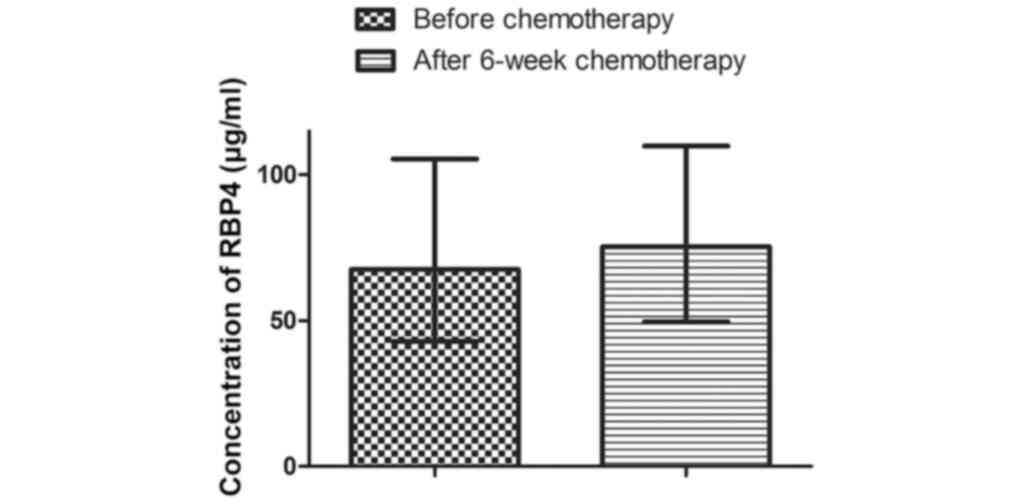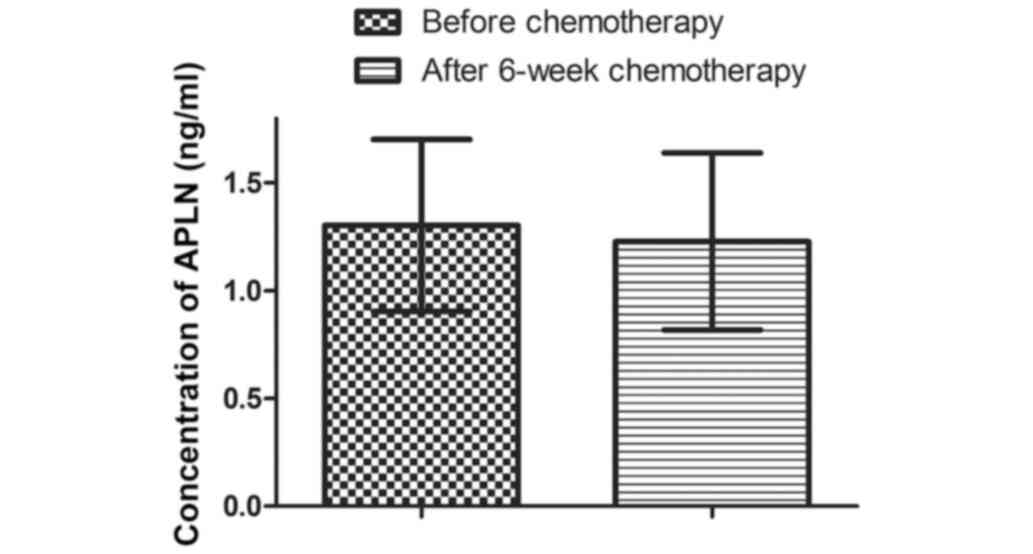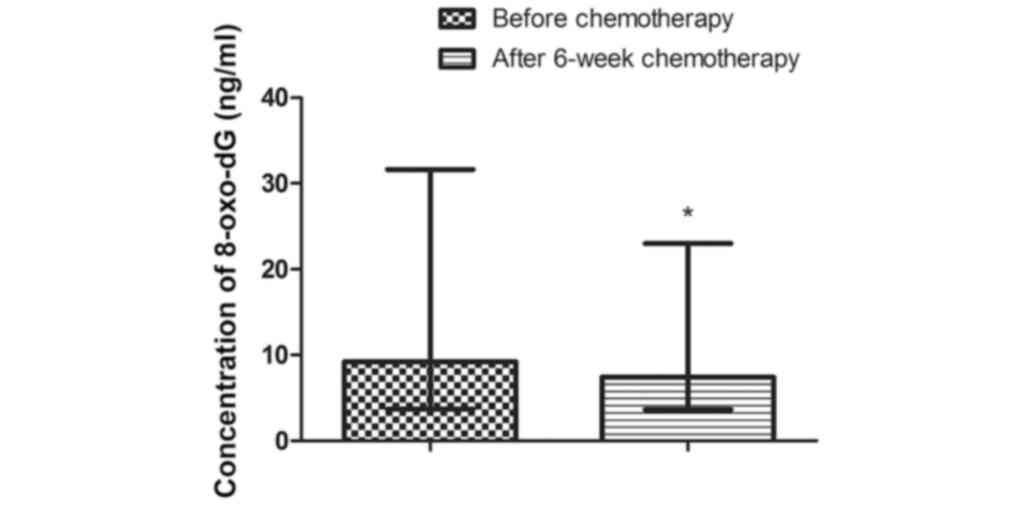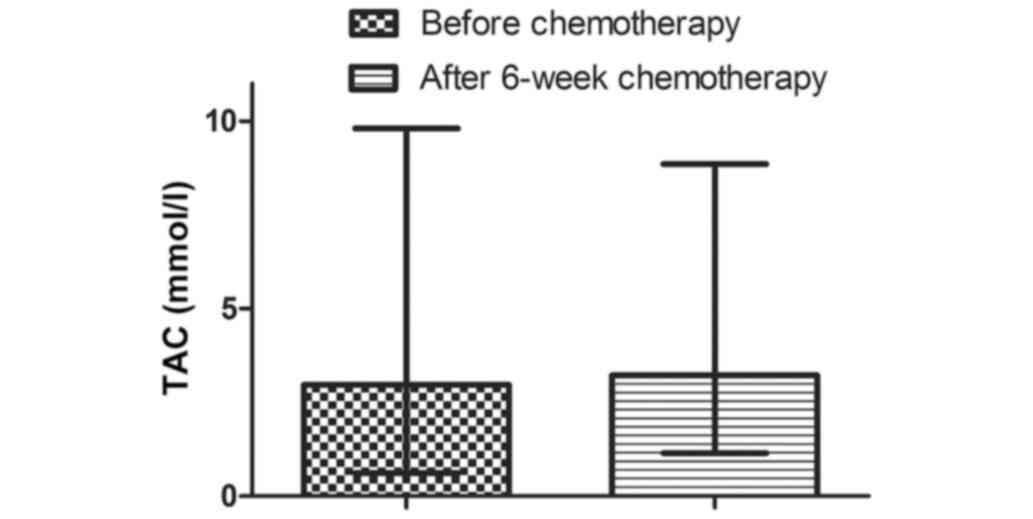|
1
|
Gershuni VM, Ahima RS and Tchou J: Obesity
and breast cancer: A complex relationship. Curr Surg Rep.
4(14)2016.PubMed/NCBI View Article : Google Scholar
|
|
2
|
Rigby AJ, Ray M and Basu TK: Biochemical
status of vitamin A in patients with malignant and benign breast
disease. J Clin Biochem Nutr. 13:53–61. 1992.
|
|
3
|
De Pergola G and Silvestris F: Obesity as
a major risk factor for cancer. J Obes. 2013(291546)2013.PubMed/NCBI View Article : Google Scholar
|
|
4
|
Wu Q, Li B, Li Z, Li J and Sun S and Sun
S: Cancer-associated adipocytes: Key players in breast cancer
progression. J Hematol Oncol. 12(95)2019.PubMed/NCBI View Article : Google Scholar
|
|
5
|
Chu DT, Phuong TNT, Tien NLB, Tran DK,
Nguyen TT, Thanh VV, Quang TL, Minh LB, Pham VH, Ngoc VTN, et al:
The effects of adipocytes on the regulation of breast cancer in the
tumor microenvironment: An update. Cells. 8(857)2019.PubMed/NCBI View Article : Google Scholar
|
|
6
|
Li J and Han X: Adipocytokines and breast
cancer. Curr Probl Cancer. 42:208–214. 2018.PubMed/NCBI View Article : Google Scholar
|
|
7
|
Hou WK, Xu YX, Yu T, Zhang L, Zhang WW, Fu
CL, Sun Y, Wu Q and Chen L: Adipocytokines and breast cancer risk.
Chin Med J (Engl). 120:1592–1596. 2007.PubMed/NCBI
|
|
8
|
Christodoulatos GS, Spyrou N, Kadillari J,
Psallida S and Dalamaga M: The role of in breast cancer: Current
evidence and perspectives. Curr Obes Rep. 8:413–433.
2019.PubMed/NCBI View Article : Google Scholar
|
|
9
|
Cabia B, Andrade S, Carreira MC, Casanueva
FF and Crujeiras AB: A role for novel adipose tissue-secreted
factors in obesity-related carcinogenesis. Obes Rev. 17:361–376.
2016.PubMed/NCBI View Article : Google Scholar
|
|
10
|
Luo Y, Yang C, Ye M, Jin C, Abbruzzese JL,
Lee MH, Yeung SC and McKeehan WL: Deficiency of metabolic regulator
FGFR4 delays breast cancer progression through systemic and
microenvironmental metabolic alterations. Cancer Metab.
1(21)2013.PubMed/NCBI View Article : Google Scholar
|
|
11
|
Jiao C, Cui L, Ma A, Li N and Si H:
Elevated serum levels of retinol-binding protein 4 are associated
with breast cancer risk: A case-control study. PLoS One.
12(e0167498)2016.PubMed/NCBI View Article : Google Scholar
|
|
12
|
Salman T, Demir L, Varol U, Akyol M,
Oflazoglu U, Yildiz Y, Taskaynatan H, Cengiz H, Guvendi G,
Kucukzeybek Y, et al: Serum apelin levels and body composition
changes in breast cancer patients treated with an aromatase
inhibitor. J Buon. 21:1419–1424. 2016.PubMed/NCBI
|
|
13
|
Uribesalgo I, Hoffmann D, Zhang Y,
Kavirayani A, Lazovic J, Berta J, Novatchkova M, Pai TP, Wimmer RA,
László V, et al: Apelin inhibition prevents resistance and
metastasis associated with anti-angiogenic therapy. EMBO Mol Med.
11(e9266)2019.PubMed/NCBI View Article : Google Scholar
|
|
14
|
Tatemoto K, Hosoya M, Habata Y, Fujii R,
Kakegawa T, Zou MX, Kawamata Y, Fukusumi S, Hinuma S, Kitada C, et
al: Isolation and characterization of a novel endogenous peptide
ligand for the human APJ receptor. Biochem Biophys Res Commun.
251:471–476. 1998.PubMed/NCBI View Article : Google Scholar
|
|
15
|
Kleinz MJ and Davenport AP: Emerging roles
of apelin in biology and medicine. Pharmacol Ther. 107:198–211.
2005.PubMed/NCBI View Article : Google Scholar
|
|
16
|
Mughal A and O'Rourke ST: Vasculareffects
of apelin: Mechanisms and therapeutic potential. Pharmacol Ther.
190:139–147. 2018.PubMed/NCBI View Article : Google Scholar
|
|
17
|
Muto J, Shirabe K, Yoshizumi T, Ikegami T,
Aishima S, Ishigami K, Yonemitsu Y, Ikeda T, Soejima Y and Maehara
Y: The apelin-APJ system induces tumor arteriogenesis in
hepatocellular carcinoma. Anticancer Res. 34:5313–5320.
2014.PubMed/NCBI
|
|
18
|
Berta J, Hoda MA, Laszlo V, Rozsas A,
Garay T, Torok S, Grusch M, Berger W, Paku S, Renyi-Vamos F, et al:
Apelin promotes lymphangiogenesis and lymph node metastasis.
Oncotarget. 12:4426–4437. 2014.PubMed/NCBI View Article : Google Scholar
|
|
19
|
Yang Y, Lv SY, Ye W and Zhang L:
Apelin/APJ system and cancer. Clin Chim Acta. 457:112–116.
2016.PubMed/NCBI View Article : Google Scholar
|
|
20
|
Lacquaniti A, Altavilla G, Picone A,
Donato V, Chirico V, Mondello Aloisi C, Marabello G, Loddo S, Buemi
A, et al: Apelin beyond kidney failure and hyponatremia: A useful
biomarker for cancer disease progression evaluation. Clin Exp Med.
15:97–105. 2015.PubMed/NCBI View Article : Google Scholar
|
|
21
|
Feng M, Yao G, Yu H, Qing Y and Wang K:
Tumor apelin, not serum apelin, is associated with the clinical
features and prognosis of gastric cancer. BMC Cancer.
16(794)2016.PubMed/NCBI View Article : Google Scholar
|
|
22
|
Kotnik P, Fischer-Posovszky P and Wabitsch
M: RBP4: A controversial adipokine. Eur J Endocrinol. 165:703–711.
2011.PubMed/NCBI View Article : Google Scholar
|
|
23
|
Graham TE, Yang Q, Bluher M, Hammarstedt
A, Ciaraldi TP, Henry RR, Wason CJ, Oberbach A, Jansson PA, Smith U
and Kahn BB: Retinol-binding protein 4 and insulin resistance in
lean, obese, and diabetic subjects. N Engl J Med. 354:2552–2563.
2006.PubMed/NCBI View Article : Google Scholar
|
|
24
|
Fei W, Chen L, Chen J, Shi Q, Zhang L, Liu
S, Li L, Zheng L and Hu X: RBP4 and THBS2 are serum biomarkers for
diagnosis of colorectal cancer. Oncotarget. 54:92254–92264.
2017.PubMed/NCBI View Article : Google Scholar
|
|
25
|
Wang Y, Wong Y and Zhang Z: Adipokine RBP4
drives ovarian cancer cell migration. J Ovarian Res.
11(29)2018.PubMed/NCBI View Article : Google Scholar
|
|
26
|
Uzan J, Laas E, Alsamad IA, Skalli D,
Mansouri D, Haddad B and Touboul C: Supervised clustering of
adipokines and hormonal receptors predict prognosis in a population
of obese women with type 1 endometrial cancer. Int J Mol Sci.
18(1055)2017.PubMed/NCBI View Article : Google Scholar
|
|
27
|
Kruk J and Aboul-Enein HY: Reactive oxygen
and nitrogen species in carcinogenesis: Implications of oxidative
stress on the progression and development of several cancer types.
Mini Rev Med Chem. 17:904–919. 2017.PubMed/NCBI View Article : Google Scholar
|
|
28
|
Waris G and Ahsan H: Reactive oxygen
species: Role in the development of cancer and various chronic
conditions. J Carcinog. 5(14)2006.PubMed/NCBI View Article : Google Scholar
|
|
29
|
Ivanova D, Zhelev Z, Aoki I, Bakalova R
and Higashi T: Overproduction of reactive oxygen species-obligatory
or not for induction of apoptosis by anticancer drugs. Chin J
Cancer Res. 28:383–396. 2016.PubMed/NCBI View Article : Google Scholar
|
|
30
|
Berstein LM, Poroshina TE, Kovalenko IM
and Vasilyev DA: Serum levels of 8-hydroxy-2'-deoxyguanosine DNA in
patients with breast cancer and endometrial cancer with and without
diabetes mellitus. Bull Exp Biol Med. 161:547–549. 2016.PubMed/NCBI View Article : Google Scholar
|
|
31
|
Opanuraks J, Boonla C, Saelim C,
Kittikiwit W, Sumpatanukul P, Honglertsakul C and Tosukhowong P:
Elevated urinary total sialic acid and increased oxidative stress
in patients with bladder cancer. Asian Biomed. 4:703–710. 2010.
|
|
32
|
Roszkowski K, Jozwicki W, Blaszczyk P,
Mucha-Malecka A and Siomek A: Oxidative damage DNA: 8-oxoGua and
8-oxodG as molecular markers of cancer. Med Sci Monit.
17:CR329–CR333. 2011.PubMed/NCBI View Article : Google Scholar
|
|
33
|
Pour Khavari A, Liu Y, He E, Skog S and
Haghdoost S: Serum 8-Oxo-dG as a predictor of sensitivity and
outcome of radiotherapy and chemotherapy of upper gastrointestinal
tumors. Oxid Med Cell Longev. 2018(4153574)2018.PubMed/NCBI View Article : Google Scholar
|
|
34
|
Di Meo S, Reed TT, Venditti P and Victor
VM: Role of ROS and RNS sources in physiological and pathological
conditions. Oxid Med Cell Longev. 2016(1245049)2016.PubMed/NCBI View Article : Google Scholar
|
|
35
|
Zowczak-Drabarczyk MM, Murawa D, Kaczmarek
L, Połom K and Litwiniuk M: Total antioxidant status in plasma of
breast cancer patients in relations to ERβ expression. Contemp
Oncol (Pozn). 17:499–503. 2013.PubMed/NCBI View Article : Google Scholar
|
|
36
|
Dludla PV, Nkambule BB, Jack B, Mkandla Z,
Mutize T, Silvestri S, Orlando P, Tiano L, Louw J and
Mazibuko-Mbeje SE: Inflammation and oxidative stress in an obese
state and the protective effects of gallic acid. Nutrients.
11(23)2018.PubMed/NCBI View Article : Google Scholar
|
|
37
|
Ren Y, Li Y, Yan J, Ma M, Zhou D, Xue Z,
Zhang Z, Liu H, Yang H, Jia L, et al: Adiponectin modulates
oxidative stress-induced mitophagy and protects C2C12 myoblasts
against apoptosis. Sci Rep. 7(3209)2017.PubMed/NCBI View Article : Google Scholar
|
|
38
|
Frühbeck G, Catalán V, Rodríguez A,
Ramírez B, Becerril S, Salvador J, Portincasa P, Colina I and
Gómez-Ambrosi J: Involvement of the leptin-adiponectin axis in
inflammation and oxidative stress in the metabolic syndrome. Sci
Rep. 7(6619)2017.PubMed/NCBI View Article : Google Scholar
|
|
39
|
Jakovcevic D, Dedic-Plavetic N, Vrbanec D,
Jakovcevic A and Jakic-Razumovic J: Breast cancer molecular
subtypes and oxidative DNA damage. Appl Immunohistochem Mol
Morphol. 23:696–703. 2015.PubMed/NCBI View Article : Google Scholar
|
|
40
|
Li JC, Yi F, Diao S and Li JY: Association
between plasma adiponectin and risk of breast cancer by molecular
subtypes. Sichuan Da Xue Xue Bao Yi Xue Ban. 50:708–713.
2019.PubMed/NCBI(In Chinese).
|
|
41
|
Januškevičienė I and Petrikaitė V:
Heterogeneity of breast cancer: The importance of interaction
between different tumor cell populations. Life Sci.
239(117009)2019.PubMed/NCBI View Article : Google Scholar
|
|
42
|
World Medical Association. World Medical
Association Declaration of Helsinki: Ethical Principles for Medical
Research Involving Human Subjects. JAMA. 310:2191–2194.
2013.PubMed/NCBI View Article : Google Scholar
|
|
43
|
American Joint Committee on Cancer. AJCC
Cancer Staging Manual. 7th edition. Springer, New York, NY,
2010.
|
|
44
|
Bray F, Ferlay J, Soerjomataram I, Siegel
RL, Torre LA and Jemal A: Global cancer statistics 2018: GLOBOCAN
estimates of incidence and mortality worldwide for 36 cancers in
185 countries. CA Cancer J Clin. 68:394–424. 2018.PubMed/NCBI View Article : Google Scholar
|
|
45
|
Divella R, De Luca R, Abbate I, Naglieri E
and Daniele A: Obesity and cancer: The role of adipose tissue and
adipocytokines-induced chronic inflammation. J Cancer.
15:2346–2359. 2016.PubMed/NCBI View Article : Google Scholar
|
|
46
|
Klaunig JE and Kamendulis LM: The role of
oxidative stress in carcinogenesis. Annu Rev Pharmacol Toxicol.
44:239–267. 2004.PubMed/NCBI View Article : Google Scholar
|
|
47
|
Han C, Zhang HT, Du L, Liu X, Jing J, Zhao
X, Yang X and Tian B: Serum levels of leptin, insulin, and lipids
in relation to breast cancer in China. Endocrine. 26:19–24.
2005.PubMed/NCBI View Article : Google Scholar
|
|
48
|
Himmetoglu S, Dincer Y, Ersoy YE,
Bayraktar B, Celik V and Akcay T: DNA oxidation and antioxidant
status in breast cancer. J Investig Med. 57:720–723.
2009.PubMed/NCBI View Article : Google Scholar
|
|
49
|
De Rossi T, Panis C, Victorino VJ, Freitas
LF, Herrera1 ACSA, Cecchini AL and Cecchini R: Breast cancer and
oxidative stress in chemotherapy. Appl Cancer Res. 29:150–156.
2009.
|
|
50
|
Vera-Ramirez L, Sanchez-Rovira P,
Ramirez-Tortosa MC, Ramirez-Tortosa CL, Granados-Principal S,
Lorente JA and Quiles JL: Oxidative stress status in metastatic
breast cancer patients receiving palliative chemotherapy and its
impact on survival rates. Free Radic Res. 46:2–10. 2012.PubMed/NCBI View Article : Google Scholar
|
|
51
|
Ray A: Tumor-linked HER2 expression:
Association with obesity and lipid-related microenvironment. Horm
Mol Biol Clin Investig: 32, 2017 doi: 10.1515/hmbci-2017-0020.
|
|
52
|
Giordano C, Vizza D, Panza S, Barone I,
Bonofiglio D, Lanzino M, Sisci D, De Amicis F, Fuqua SA, Catalano S
and Andò S: Leptin increases HER2 protein levels through a
STAT3-mediated up-regulation of Hsp90 in breast cancer cells. Mol
Oncol. 7:379–391. 2013.PubMed/NCBI View Article : Google Scholar
|
|
53
|
Soma D, Kitayama J, Yamashita H, Miyato H,
Ishikawa M and Nagawa H: Leptin augments proliferation of breast
cancer cells via transactivation of HER2. J Surg Res. 149:9–14.
2008.PubMed/NCBI View Article : Google Scholar
|
|
54
|
Fiorio E, Mercanti A, Terrasi M, Micciolo
R, Remo A, Auriemma A, Molino A, Parolin V, Di Stefano B, Bonetti
F, et al: Leptin/HER2 crosstalk in breast cancer: In vitro study
and preliminary in vivoanalysis. BMC Cancer. 8(305)2008.PubMed/NCBI View Article : Google Scholar
|
|
55
|
El-Benhawy SA, Abd El Moneim NA and Ebeid
SA: Serum adipocytokines (Visfatin and Resistin): New biomarkers of
breast carcinogenesis. Middle East J Cancer. 6:253–265. 2015.
|
|
56
|
Chen DC, Chung YF, Yeh YT, Chaung HC, Kuo
FC, Fu OY, Chen HY, Hou MF and Yuan SSF: Serum adiponectin and
leptin levels in Taiwanese breast cancer patients. Cancer Lett.
237:109–114. 2006.PubMed/NCBI View Article : Google Scholar
|
|
57
|
Zowczak-Drabarczyk M, Murawa D, Połom K,
Szarszewska M, Nowakowski W and Mańczak M: Plasma total antioxidant
status in breast cancer women in relation to lymph node involvement
and HER-2/neu expression. Rep Pract Oncol Radiother. 12:319–322.
2007.
|
|
58
|
Picon-Ruiz M, Morata-Tarifa C,
Valle-Goffin JJ, Friedman ER and Slingerland JM: Obesity and
adverse breast cancer risk and outcome: Mechanistic insights and
strategies for intervention. CA Cancer J Clin. 6:378–397.
2017.PubMed/NCBI View Article : Google Scholar
|
|
59
|
Lee CH, Woo YC, Wang Y, Yeung CY, Xu A and
Lam KSL: Obesity, adipokines and cancer: An update. Clin
Endocrinol. 83:147–156. 2015.PubMed/NCBI View Article : Google Scholar
|
|
60
|
Gui Y, Pan Q, Chen X, Xu S, Luo X and Chen
L: The association between obesity related adipokines and risk of
breast cancer: A meta-analysis. Oncotarget. 8:75389–75399.
2017.PubMed/NCBI View Article : Google Scholar
|
|
61
|
Loft S, Vistisen K, Ewertz M, Tjønneland
A, Overvad K and Poulsen HE: Oxidative DNA damage estimated by
8-hydroxydeoxyguanosine Excretion in humans: Influence of smoking,
gender and body mass index. Carcinogenesis. 13:2241–2247.
1992.PubMed/NCBI View Article : Google Scholar
|
|
62
|
Mizoue T, Kasai H, Kubo T and Tokunaga S:
Leanness, smoking, and enhanced oxidative DNA damage. Cancer
Epidemiol Biomarkers Prev. 15:582–585. 2006.PubMed/NCBI View Article : Google Scholar
|
|
63
|
Mizoue T, Tokunaga S, Kasai H, Kawai K,
Sato M and Kubo T: Body mass index and oxidative DNA damage: A
longitudinal study. Cancer Sci. 98:1254–1258. 2007.PubMed/NCBI View Article : Google Scholar
|
|
64
|
Than A, Zhang X, Leow MK, Poh CL, Chong SK
and Chen P: Apelin attenuates oxidative stress in human adipocytes.
J Biol Chem. 289:3763–3774. 2014.PubMed/NCBI View Article : Google Scholar
|
|
65
|
Wang J, Chen H, Liu Y, Zhou W, Sun R and
Xia M: Retinol binding protein 4 induces mitochondrial dysfunction
and vascular oxidative damage. Atherosclerosis. 240:335–344.
2015.PubMed/NCBI View Article : Google Scholar
|
|
66
|
Nies YH, Ali AM, Abdullah N, Islahudin F
and Shah NM: A qualitative study among breast cancer patients on
chemotherapy: Experiences and side-effects. Patient Prefer
Adherence. 12:1955–1964. 2018.PubMed/NCBI View Article : Google Scholar
|
|
67
|
Słomian G, Świętochowska E, Nowak G,
Pawlas K, Żelazko A and Nowak P: Chemotherapy and plasma adipokines
level in patients with colorectal cancer. Postepy Hig Med Dosw.
71:281–290. 2017.PubMed/NCBI View Article : Google Scholar
|
|
68
|
Coskun T, Kosova F, Ari Z, Sakarya A and
Kaya Y: Effect of oncological treatment on serum adipocytokine
levels in patients with stage II-III breast cancer. Mol Clin Oncol.
4:893–897. 2016.PubMed/NCBI View Article : Google Scholar
|
|
69
|
Conklin KA: Chemotherapy-associated
oxidative stress: Impact on chemotherapeutic effectiveness. Integr
Cancer Ther. 3(294)2014.PubMed/NCBI View Article : Google Scholar
|
|
70
|
Abdel-Salam OME, Youness ER and Hafez HF:
The antioxidant status of plasma in patients with breast cancer
undergoing chemotherapy. Open J Mol Integr Physiol. 1:29–35.
2011.
|
|
71
|
Chernikov AV, Gudkov SV, Usacheva AM and
Bruskov VI: Exogenous 8-oxo-7,8-dihydro-2'-deoxyguanosine:
Biomedical properties, mechanisms of action, and therapeutic
potential. Biochemistry (Mosc). 82:1686–1701. 2017.PubMed/NCBI View Article : Google Scholar
|
|
72
|
Roszkowski K, Filipiak J, Wisniewska M,
Mucha-Malecka A and Basta P: Potential survival markers in cancer
patients undergoing chemotherapy. Clin Exp Med. 15:381–387.
2015.PubMed/NCBI View Article : Google Scholar
|
|
73
|
Crohns M, Saarelainen S, Erhola M, Alho H
and Kellokumpu-Lehtinen P: Impact of radiotherapy and chemotherapy
on biomarkers of oxidative DNA damage in lung cancer patients. Clin
Biochem. 42:1082–1090. 2009.PubMed/NCBI View Article : Google Scholar
|
|
74
|
Sova H, Jukkola-Vuorinen A, Puistola U,
Kauppila S and Karihtala P: 8-hydroxydeoxyguanosine: A new
potential independent prognostic factor in breast cancer. Br J
Cancer. 102:1018–1023. 2010.PubMed/NCBI View Article : Google Scholar
|
|
75
|
Hewala TI and Abo Elsoud MR: The clinical
significance of serum oxidative stress biomarkers in breast cancer
females. Med Res J. 4:1–7. 2019.
|
|
76
|
Subramanyam D, Subbaiah KCV, Rajendra W
and Lokanatha V: Serum selenium concentration and antioxidant
activity in cervical cancer patients before and after treatment.
Exp Oncol. 35:97–100. 2013.PubMed/NCBI
|


















